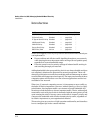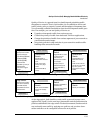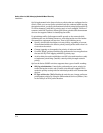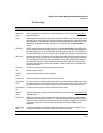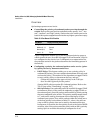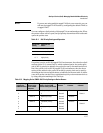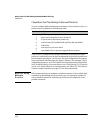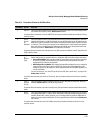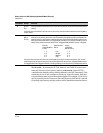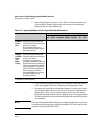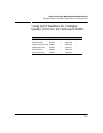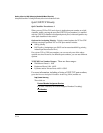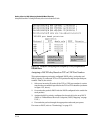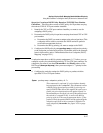
Quality of Service (QoS): Managing Bandwidth More Effectively
Introduction
Precedence Criteria Overview
6 Source-
Port
Takes precedence based on the source-port (that is, the port on which the packet entered the
switch).
If a packet does not meet the criteria for source-port priority, then precedence defaults to Incoming 802.1p
criteria, below
7 Incoming
Where a packet enters the switch on a tagged VLAN, if QoS is not configured to override the
802.1p
packet’s priority setting, the switch uses the packet’s existing 802.1p priority (assigned by an
Priority
upstream device or application) to determine which inbound and outbound port queue to use.
If the packet leaves the switch on a tagged VLAN, then there is no change to its 802.1p priority
setting. If the packet leaves the switch on an untagged VLAN, the 802.1p priority is dropped.
Entering Outbound Port Exiting
(Inbound) 802.1p Queue (Outbound)
Priority 802.1p Priority
1 - 2
Low
1 - 2
0 - 3
Normal
0 - 3
4 - 5
Medium
4 - 5
6 - 7
High
6 - 7
If a packet does not meet the criteria for Incoming 802.1p priority, then the packet goes to the “normal”
outbound queue of the appropriate port. If the packet entered the switch on an untagged VLAN, but exits
on a tagged VLAN, then a tagged VLAN field, including an 802.1p priority of 0 (normal), is added to the packet.
No Override. By default, the IP ToS, Protocol, and VLAN-ID criteria auto-
matically list each of their priority options as
No-override. (Some IP TOS
codepoints use default priority settings defined by the DSCP standard.) This
means that if you do not configure a priority for a specific option, QoS does
not prioritize packets to which that option applies. For example, if you do not
specify a priority for the IP protocol, then the IP protocol will not be a criteria
for setting a QoS priority and the packets will be handled as described above.
15-10



